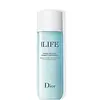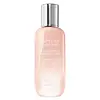What's inside
What's inside
 Key Ingredients
Key Ingredients

 Benefits
Benefits

 Concerns
Concerns

 Ingredients Side-by-side
Ingredients Side-by-side

Water
Skin ConditioningPropanediol
SolventGlycerin
HumectantPentylene Glycol
Skin ConditioningPropylene Glycol
HumectantMicrocrystalline Cellulose
AbsorbentPhenoxyethanol
PreservativePEG-32
HumectantSodium Citrate
BufferingCaprylic/Capric Triglyceride
MaskingAscorbyl Glucoside
AntioxidantPEG-12 Dimethicone
Skin ConditioningPEG-60 Hydrogenated Castor Oil
EmulsifyingCellulose Gum
Emulsion StabilisingParfum
MaskingMalva Sylvestris Extract
AstringentButylene Glycol
HumectantPoloxamer 407
EmulsifyingCitric Acid
BufferingSodium Dilauramidoglutamide Lysine
HumectantTocopherol
AntioxidantHydrogenated Lecithin
EmulsifyingHyaluronic Acid
HumectantHaberlea Rhodopensis Leaf Extract
Skin ConditioningBenzyl Alcohol
PerfumingPaeonia Suffruticosa Root Extract
Skin ProtectingBHT
AntioxidantWater, Propanediol, Glycerin, Pentylene Glycol, Propylene Glycol, Microcrystalline Cellulose, Phenoxyethanol, PEG-32, Sodium Citrate, Caprylic/Capric Triglyceride, Ascorbyl Glucoside, PEG-12 Dimethicone, PEG-60 Hydrogenated Castor Oil, Cellulose Gum, Parfum, Malva Sylvestris Extract, Butylene Glycol, Poloxamer 407, Citric Acid, Sodium Dilauramidoglutamide Lysine, Tocopherol, Hydrogenated Lecithin, Hyaluronic Acid, Haberlea Rhodopensis Leaf Extract, Benzyl Alcohol, Paeonia Suffruticosa Root Extract, BHT
Water
Skin ConditioningPropanediol
SolventGlycerin
HumectantDipropylene Glycol
HumectantPEG-32
HumectantGlycolic Acid
BufferingTromethamine
BufferingPEG-8
HumectantPhenoxyethanol
PreservativePPG-26-Buteth-26
Skin ConditioningPEG-40 Hydrogenated Castor Oil
EmulsifyingPEG-150
HumectantParfum
MaskingChlorella Vulgaris Extract
Skin ConditioningAdenosine
Skin ConditioningAlcohol
AntimicrobialAnanas Sativus Fruit Extract
Skin ConditioningSodium Tocopheryl Phosphate
AntioxidantPapain
Skin ConditioningIris Florentina Root Extract
MaskingBHT
AntioxidantCI 60730
Cosmetic ColorantTocopherol
AntioxidantWater, Propanediol, Glycerin, Dipropylene Glycol, PEG-32, Glycolic Acid, Tromethamine, PEG-8, Phenoxyethanol, PPG-26-Buteth-26, PEG-40 Hydrogenated Castor Oil, PEG-150, Parfum, Chlorella Vulgaris Extract, Adenosine, Alcohol, Ananas Sativus Fruit Extract, Sodium Tocopheryl Phosphate, Papain, Iris Florentina Root Extract, BHT, CI 60730, Tocopherol
Ingredients Explained
These ingredients are found in both products.
Ingredients higher up in an ingredient list are typically present in a larger amount.
BHT is a synthetic antioxidant and preservative.
As an antioxidant, it helps your body fight off free-radicals. Free-radicals are molecules that may damage your skin cells.
As a preservative, it is used to stabilize products and prevent them from degrading. Specifically, BHT prevents degradation from oxidation.
The concerns related to BHT come from oral studies; this ingredient is currently allowed for use by both the FDA and EU.
However, it was recently restricted for use in the UK as of April 2024.
Learn more about BHTGlycerin is already naturally found in your skin. It helps moisturize and protect your skin.
A study from 2016 found glycerin to be more effective as a humectant than AHAs and hyaluronic acid.
As a humectant, it helps the skin stay hydrated by pulling moisture to your skin. The low molecular weight of glycerin allows it to pull moisture into the deeper layers of your skin.
Hydrated skin improves your skin barrier; Your skin barrier helps protect against irritants and bacteria.
Glycerin has also been found to have antimicrobial and antiviral properties. Due to these properties, glycerin is often used in wound and burn treatments.
In cosmetics, glycerin is usually derived from plants such as soybean or palm. However, it can also be sourced from animals, such as tallow or animal fat.
This ingredient is organic, colorless, odorless, and non-toxic.
Glycerin is the name for this ingredient in American English. British English uses Glycerol/Glycerine.
Learn more about GlycerinParfum is a catch-all term for an ingredient or more that is used to give a scent to products.
Also called "fragrance", this ingredient can be a blend of hundreds of chemicals or plant oils. This means every product with "fragrance" or "parfum" in the ingredients list is a different mixture.
For instance, Habanolide is a proprietary trade name for a specific aroma chemical. When used as a fragrance ingredient in cosmetics, most aroma chemicals fall under the broad labeling category of “FRAGRANCE” or “PARFUM” according to EU and US regulations.
The term 'parfum' or 'fragrance' is not regulated in many countries. In many cases, it is up to the brand to define this term.
For instance, many brands choose to label themselves as "fragrance-free" because they are not using synthetic fragrances. However, their products may still contain ingredients such as essential oils that are considered a fragrance by INCI standards.
One example is Calendula flower extract. Calendula is an essential oil that still imparts a scent or 'fragrance'.
Depending on the blend, the ingredients in the mixture can cause allergies and sensitivities on the skin. Some ingredients that are known EU allergens include linalool and citronellol.
Parfum can also be used to mask or cover an unpleasant scent.
The bottom line is: not all fragrances/parfum/ingredients are created equally. If you are worried about fragrances, we recommend taking a closer look at an ingredient. And of course, we always recommend speaking with a professional.
Learn more about ParfumPEG-32 is a synthetic and water-soluble polymer with 32 repeating units. It has humectant, solvent, and emulsifying properties.
As a solvent and emulsifier, it helps dissolve and blend ingredients. It is also able to attract water as a humectant to help hydrate skin. According to a manufacturer, this ingredient is non-greasy, gentle, and mildly scented.
Japanese manufacturers will sometimes call this ingredient PEG 1540.
Learn more about PEG-32Phenoxyethanol is a preservative that has germicide, antimicrobial, and aromatic properties. Studies show that phenoxyethanol can prevent microbial growth. By itself, it has a scent that is similar to that of a rose.
It's often used in formulations along with Caprylyl Glycol to preserve the shelf life of products.
Propanediol is an all-star ingredient. It softens, hydrates, and smooths the skin.
It’s often used to:
Propanediol is not likely to cause sensitivity and considered safe to use. It is derived from corn or petroleum with a clear color and no scent.
Learn more about PropanediolTocopherol (also known as Vitamin E) is a common antioxidant used to help protect the skin from free-radicals and strengthen the skin barrier. It's also fat soluble - this means our skin is great at absorbing it.
Vitamin E also helps keep your natural skin lipids healthy. Your lipid skin barrier naturally consists of lipids, ceramides, and fatty acids. Vitamin E offers extra protection for your skin’s lipid barrier, keeping your skin healthy and nourished.
Another benefit is a bit of UV protection. Vitamin E helps reduce the damage caused by UVB rays. (It should not replace your sunscreen). Combining it with Vitamin C can decrease sunburned cells and hyperpigmentation after UV exposure.
You might have noticed Vitamin E + C often paired together. This is because it is great at stabilizing Vitamin C. Using the two together helps increase the effectiveness of both ingredients.
There are often claims that Vitamin E can reduce/prevent scarring, but these claims haven't been confirmed by scientific research.
Learn more about TocopherolWater. It's the most common cosmetic ingredient of all. You'll usually see it at the top of ingredient lists, meaning that it makes up the largest part of the product.
So why is it so popular? Water most often acts as a solvent - this means that it helps dissolve other ingredients into the formulation.
You'll also recognize water as that liquid we all need to stay alive. If you see this, drink a glass of water. Stay hydrated!
Learn more about Water